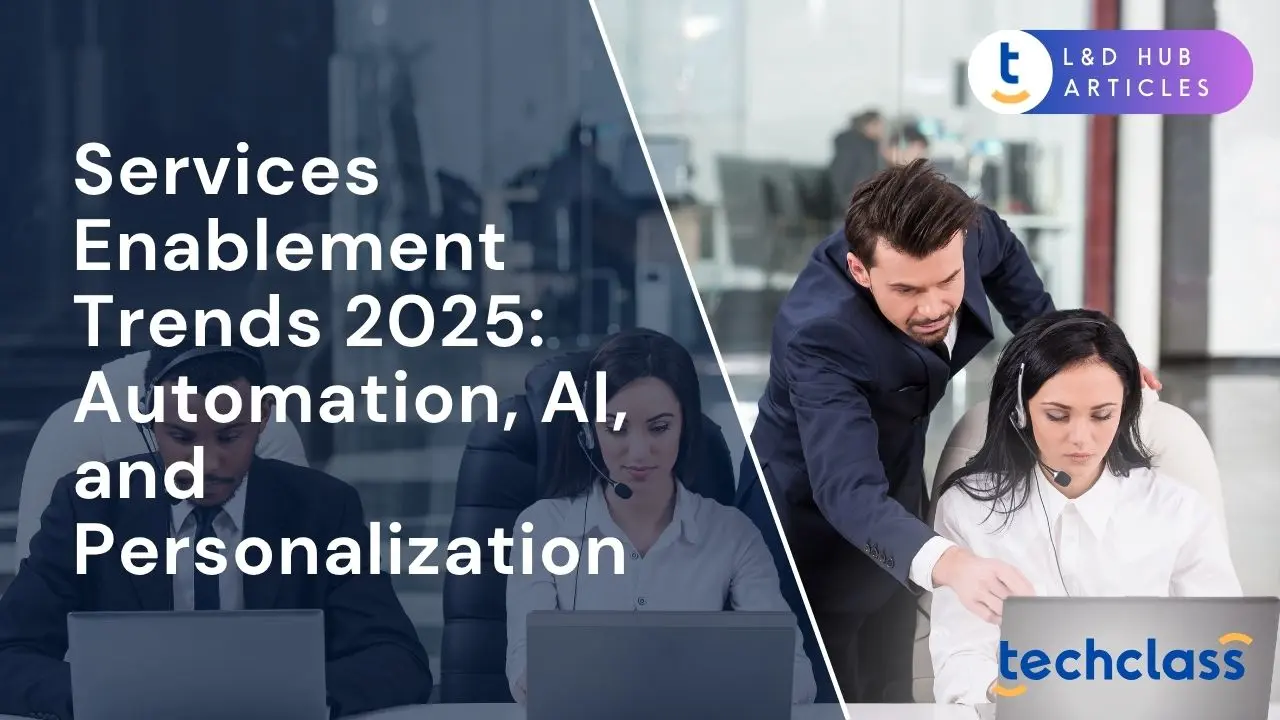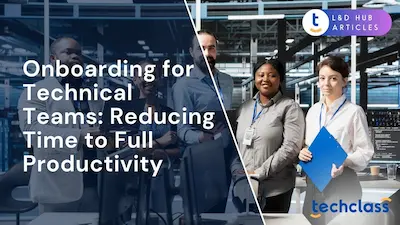
In the global business landscape of 2025, organizations are redefining how they deliver value and support customers. A key concept driving this change is service enablement – the practice of equipping teams with the right tools, processes, and skills to deliver services effectively and consistently. Today, a trio of transformative trends is at the forefront of service enablement: automation, artificial intelligence (AI), and personalization. These trends are revolutionizing operations and customer experiences across industries, from streamlining internal workflows to tailoring services for individual needs. This article explores how automation, AI, and personalization are shaping service enablement in 2025, and what HR professionals, business owners, and enterprise leaders need to know to stay ahead.
Automation is revolutionizing how services are delivered by streamlining processes and freeing employees from repetitive tasks. In 2025, companies are implementing automation everywhere – from software bots handling data entry to physical robots assisting in warehouses and manufacturing. This “automation everywhere” mindset allows businesses to scale operations without sacrificing quality. Routine tasks like scheduling, invoice processing, or basic customer inquiries can be handled automatically, which boosts efficiency and reduces errors. For example, many customer service teams now use automated chatbots to answer common questions instantly, enabling human agents to focus on more complex issues. In manufacturing, robots work alongside humans to assemble products faster and more safely than before.
The impact of automation on the workforce is significant. By taking over mundane duties, automation empowers employees to concentrate on higher-value activities such as creative problem-solving, strategy, and building client relationships. However, it also demands that organizations adapt their workforce skills. According to the World Economic Forum, the rapid advance of automation could displace around 85 million jobs by 2025, while creating 97 million new roles in fields like data analysis, AI, and content creation. This shift underscores the need for reskilling and upskilling: companies that invest in training their people for new digital roles will be the ones that remain competitive. In fact, over 80% of business executives have accelerated plans to digitize work processes, and about half are speeding up automation of certain roles. HR leaders are responding by developing programs to retrain staff for emerging positions and by hiring talent adept in technology and process management.
Beyond workforce changes, automation in service enablement leads to faster service delivery and improved consistency. Automated workflows ensure that every step — from a client’s request to service fulfillment — follows best practices with minimal delay. For instance, companies are deploying Robotic Process Automation (RPA) in finance and HR departments to automatically approve routine requests or transfer data between systems without human error. This not only cuts down processing time but also standardizes outcomes. As one example, a consumer goods company might use RPA to automatically update inventory and notify sales teams when stock runs low, preventing delays in customer orders. Across industries, such real-time process automation helps organizations respond quickly to market demands and client needs.
It’s important to note that automation is not about replacing humans wholesale, but rather about augmenting human capabilities. When mundane tasks are automated, employees can focus on innovation, personalized customer interactions, and other areas where the human touch is irreplaceable. Businesses that strike the right balance – automating what machines do best while leveraging human creativity and empathy – see the greatest gains. They enjoy increased productivity, lower operational costs, and often higher employee satisfaction as staff can engage in more meaningful work. In summary, automation has become a cornerstone of service enablement in 2025, enabling scalable growth and consistent service quality, while also prompting organizations to invest in their people to take on new, higher-level roles.
Hand-in-hand with automation is the rise of artificial intelligence (AI) as a transformative force in service enablement. AI refers to a broad set of technologies – from machine learning algorithms to advanced generative AI – that enable machines to mimic human intelligence, learn from data, and make decisions or predictions. In 2025, AI has matured from experimental pilots into a practical tool for businesses of all sizes. Companies are embedding AI in many facets of their operations to enhance decision-making, predict outcomes, and increase efficiency. From customer service bots that understand natural language to AI systems that analyze big data for insights, this technology is helping organizations work smarter and deliver more value.
One of the most visible impacts of AI is in customer-facing services. Many organizations use AI-driven chatbots and virtual assistants to provide instant support to customers 24/7. These AI agents can answer questions, troubleshoot basic problems, and even process requests – all in a conversational manner that continues to improve over time as the AI learns. For example, banks have virtual assistants that help customers check balances or transfer funds via a chat interface, and e-commerce sites use AI to assist shoppers with product inquiries. The benefit is twofold: customers get quick, round-the-clock help, and human support teams are freed up to tackle complex queries that truly need personal attention. In fact, industry research indicates that by 2025, 80% of customer service and support organizations will use generative AI – a type of AI that can create content and responses – to boost agent productivity and improve customer experience. This widespread adoption shows how integral AI has become in delivering faster and smarter service.
AI is also transforming decision-making and internal processes. Advanced analytics and machine learning models can sift through vast datasets far beyond human capacity, uncovering patterns and trends that help leaders make informed decisions. In marketing and sales, AI algorithms identify which prospects are most likely to convert or which customers might churn, allowing teams to proactively address opportunities and issues. In operations and supply chain management, AI systems forecast demand or detect anomalies in real time – for example, flagging a potential equipment failure in a factory so it can be fixed before it disrupts production. These capabilities lead to data-driven decisions and predictive service delivery, where companies can anticipate needs rather than just react.
Adoption of AI has accelerated rapidly in recent years. Businesses recognize that AI is a key to staying competitive, which is reflected in their investment priorities. A recent McKinsey report found that over the next few years, 92% of companies plan to increase their investments in AI technologies, yet only about 1% currently feel they have achieved full AI maturity (meaning AI is integrated deeply into their workflows). This gap highlights a challenge: while enthusiasm and spending on AI are high, many organizations are still learning how to implement AI effectively at scale. For HR and business leaders, this means there is a strong push to build AI capabilities – not just by acquiring tools, but also by fostering the necessary skills and governance. Many companies are hiring data scientists and AI specialists, and training their existing staff on AI fundamentals, so employees can work alongside AI systems effectively.
Equally important is addressing the ethical and trust considerations that come with AI. As AI takes on bigger roles in service enablement (such as making recommendations to customers or automating decisions like loan approvals), companies must ensure these systems are fair, transparent, and secure. Leaders are increasingly focusing on “responsible AI” – implementing guidelines so that AI outcomes are unbiased and explainable, and safeguarding customer data used by AI algorithms. There’s also an emphasis on keeping a “human in the loop” for oversight: AI can crunch numbers and generate suggestions, but humans still provide context, creativity, and empathy. For example, an AI might flag a pattern in customer behavior, but a human manager will decide how to adjust the service strategy in response.
In essence, AI in 2025 is a powerful enabler of smarter services and operations. It’s augmenting human expertise – doctors use AI to help analyze medical images, recruiters use AI to screen large volumes of applications, and financial advisors use AI-driven insights to personalize advice. The organizations that succeed with AI are those that view it not as a magic solution, but as a tool that works best in partnership with people. When AI is integrated thoughtfully, companies see outcomes like faster problem resolution, more accurate business forecasts, and highly personalized customer interactions, all of which drive better business performance.
As automation and AI improve efficiency behind the scenes, personalization is elevating the front-end experience for customers and even employees. Personalization is the practice of tailoring products, services, and interactions to individual preferences and needs. Rather than a one-size-fits-all approach, businesses in 2025 are leveraging data and technology to customize experiences at scale – delivering the right content or service to the right person at the right time. This trend is rooted in a simple fact: today’s consumers (and workforces) expect to be treated as individuals. They are far more likely to engage with companies that remember their preferences, anticipate their needs, and make them feel valued.
In the realm of customer experience, personalization has proven to be a game-changer. Companies across industries are harnessing data from past interactions, purchase history, and even real-time behavior to create more relevant and meaningful experiences. A classic example is the entertainment streaming industry – platforms suggest movies or shows based on a user’s unique viewing history, which keeps viewers more engaged. In retail, websites and apps personalize product recommendations; for instance, an online store might showcase winter running gear to a customer who previously bought athletic shoes and lives in a cold climate. This level of relevance can significantly boost sales and loyalty. According to industry research, about 75% of consumers are more likely to purchase from brands that deliver personalized content and offers. In other words, personalization isn’t just a nice-to-have feature – it directly correlates with business growth because customers respond positively when they feel understood by a brand.
Personalization is closely tied to the power of AI and analytics. Hyper-personalization, an emerging practice in 2025, uses advanced AI to analyze vast customer data (from browsing habits to social media behavior) and deliver experiences uniquely tailored to each user. For example, consider an online travel service that uses AI to learn a customer’s travel style – if the customer often books family-friendly accommodations and beach destinations, the platform might highlight suitable vacation packages proactively. Or in financial services, banks use AI to analyze transaction data and then personalize financial advice or product offers (like alerting a customer about a high-yield savings account if the AI sees they have excess cash in checking). These hyper-personal touches help build a stronger relationship between the service provider and the customer.
Beyond consumer applications, personalization is also making inroads in the workplace. Employers are starting to personalize training and development programs for their staff – often called personalized learning or career pathways. By leveraging AI to understand an employee’s skills and learning style, HR teams can recommend courses or stretch assignments tailored to each individual’s career goals. Even internal services, such as IT support or benefits administration, are being personalized so that employees receive relevant information quickly. The result is a workforce that feels more engaged and supported, which in turn can improve productivity and retention.
However, achieving effective personalization comes with challenges. One major consideration is data privacy and trust. Delivering personalized experiences requires collecting and analyzing personal data, which companies must handle carefully. With regulations tightening globally (such as GDPR and other privacy laws), businesses are working to be transparent about data usage and to secure customer information. The goal is to find the sweet spot where customers feel comfortable sharing data because they see clear value in return – like convenience or special treatment – without crossing the line into feeling surveilled or manipulated. Interestingly, many consumers do want personalization; a Nextiva customer experience report noted that 90% of customers expect interactions with brands to be personalized to their needs. This sets a high bar for companies to meet expectations while also respecting privacy boundaries.
Another challenge is ensuring personalization remains genuine and helpful, rather than gimmicky. Personalization should solve problems or enhance satisfaction. For instance, a case in point: a telecom company implemented personalization in its customer service by using AI to route calls to the most appropriate support agent based on a customer’s profile and past issues – reducing call times and increasing resolution success. In contrast, sending a flood of personalized marketing emails that add no real value can backfire and erode trust. Therefore, successful personalization strategies focus on quality over quantity – making each customer touchpoint as relevant as possible.
The benefits of personalization, when done right, are substantial. Customers experience greater convenience, relevance, and emotional connection with the brand. This drives loyalty and repeat business. One statistic reflects this outcome: studies have found that a significant portion of buyers (nearly half) have made impulse purchases because a personalized recommendation or offer resonated with them at the right moment. Additionally, companies that excel at personalization and customer experience tend to outperform their competitors in revenue growth. Personalization is essentially the human side of service enablement’s tech trends – it uses the power of automation and AI behind the scenes to deliver a human-centric experience, making each customer or employee feel seen and appreciated.
The trends of automation, AI, and personalization are not just buzzwords – they are fundamental shifts reshaping how organizations operate and compete in 2025. For HR professionals, business owners, and enterprise leaders, embracing these trends is becoming essential for future success. Service enablement in this era means leveraging technology to empower your teams and delight your customers in equal measure. It’s about automating where we can to gain efficiency, deploying AI to work smarter, and personalizing experiences to build stronger relationships.
To navigate this future, leaders should take a strategic and human-centered approach. First, invest in people as much as in technology. The most advanced automation or AI system will fall short if employees aren’t trained to use it or if they fear it. By fostering a culture of continuous learning and providing reskilling opportunities, companies can ensure their workforce thrives alongside intelligent machines. When employees understand that automation and AI remove drudgery and amplify their capabilities, they are more likely to champion these tools. As studies have shown, employees are generally ready and even eager to work with AI – it’s effective leadership and vision that must catch up to fully integrate these tools into workflows. Clear communication about the benefits and new opportunities created by these trends will help gain buy-in across the organization.
Second, maintain a customer-centric and ethical perspective. Automation and AI should be implemented with the end-user in mind – whether that end-user is a customer or an internal team relying on a service. Ensuring quality control, data privacy, and a positive user experience will determine if these tech initiatives truly add value. For instance, if deploying an AI chatbot for customer support, leaders should monitor its performance and have humans ready to intervene when needed, preserving the “human touch” where it matters most. Likewise, as personalization efforts ramp up, staying transparent about data usage and giving customers control over their data will build trust. Companies that balance personalization with respect for privacy are likely to earn deeper loyalty in the long run.
Finally, think holistically and break down silos. Automation, AI, and personalization work best when they are interwoven into the fabric of the business rather than isolated projects. This might mean encouraging collaboration between IT, HR, marketing, and other departments to share insights and align on technology initiatives. An enterprise leader might establish cross-functional teams to explore how AI can improve both customer-facing services and internal processes simultaneously. Such a unified approach ensures consistency and maximizes the ROI of innovation. It also reflects a global viewpoint – in a digitally connected world, innovation in one part of the business can quickly influence others.
In conclusion, the year 2025 marks a pivotal time for service enablement. Organizations that proactively adapt to automation, AI, and personalization are positioning themselves to deliver exceptional service outcomes and operational excellence. They are finding that these trends, when harnessed thoughtfully, do not replace the human element but rather elevate it – allowing employees to focus on creativity and complex problem-solving, and allowing customers to feel more understood and served as individuals. The road ahead is one of continuous evolution, but with a clear strategy and openness to change, businesses can confidently ride the wave of these trends. By doing so, they will not only improve efficiency and growth but also create richer, more personalized experiences that resonate in a world where expectations have never been higher.
Service enablement involves equipping teams with tools, processes, and skills to deliver effective and consistent services, crucial for competitive advantage.
Automation automates routine tasks, while AI-powered chatbots and virtual assistants provide instant, 24/7 support, improving speed and efficiency.
Personalization tailors products, services, and interactions to individual preferences, boosting engagement, loyalty, and sales.
By focusing on responsible AI practices, including transparency, data privacy, bias mitigation, and maintaining human oversight.
A unified strategy involving cross-departmental collaboration ensures consistency, maximizes ROI, and enhances overall service quality.

.webp)
